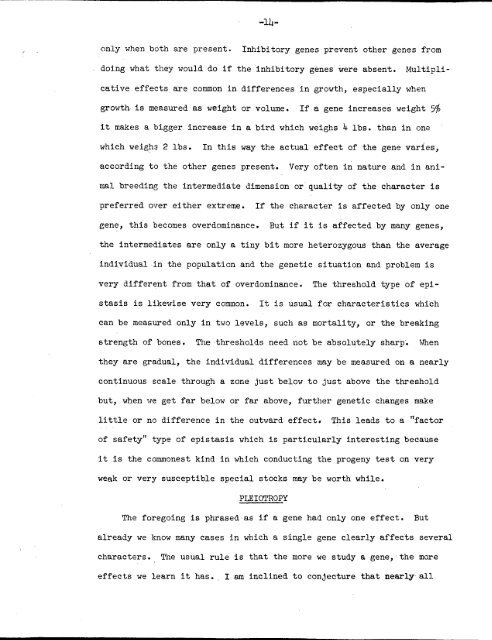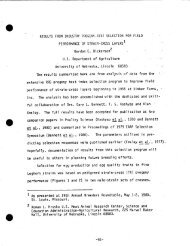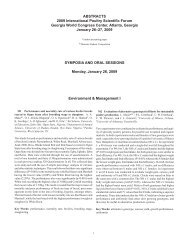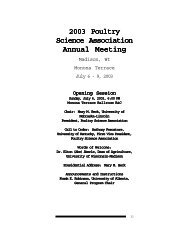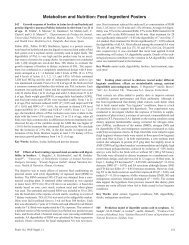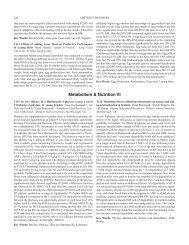Explanation Of Gene Action As Related To Physiological
Explanation Of Gene Action As Related To Physiological
Explanation Of Gene Action As Related To Physiological
Create successful ePaper yourself
Turn your PDF publications into a flip-book with our unique Google optimized e-Paper software.
only when both are present. Inhibitory genes prevent other genes from<br />
doing what they would do if the inhibitory genes were absent. Multiplicative<br />
effects are common in differences in growth, especially when<br />
growth is measured as weight or volume. If a gene increases weight 5%<br />
it makes a bigger increase in a bird which weighs 4 lbs. than in one<br />
which weighs 2 lbs. In this way the actual effect of the gene varies,<br />
according to the other genes present. Very often in nature and in animal<br />
breeding the intermediate dimension or quality of the character is<br />
preferred over either extreme. If the character is affected by only one<br />
gene, this becomes overdominance. But if it is affected by many genes,<br />
the intermediates are only a tiny bit more heterozygous than the average<br />
individual in the population and the genetic situation and problem is<br />
very different from that of overdominance. The threshold type of epistasis<br />
is likewise very common. It is usual for characteristics which<br />
can be measured only in two levels, such as mortality, or the breaking<br />
strength of bones. Tkethresholds need not be absolutely sharp. When<br />
they are gradual, the individual differences may be measured on a nearly<br />
continuous scale through a zone just below to just above the threshold<br />
but, when we get far below or far above, further genetic changes make<br />
little or no difference in the outward effect, This leads to a "factor<br />
of safety" type of epistasis which is particularly interesting because<br />
it is the commonest kind in which conducting the progeny test on very<br />
weak or very susceptible special stocks may be worth while.<br />
PLEIOTROPY<br />
The foregoing is phrased as if a gene had only one effect. But<br />
already we know many cases in which a single gene clearly affects several<br />
characters. The usual rule is that the more we study a gene, the more<br />
effects we learn it has. I am inclined to conjecture that nearly all


